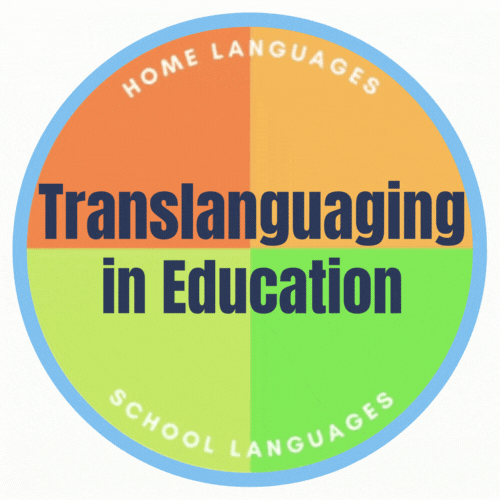
Translanguaging
Strategies
7 Considerations of Translanguaging based teaching for teachers

Know your students
Teachers need to know students’ linguistic performances in home and school languages. TL performance top shows how a student can perform in oracy and literacy in a home language and two school languages. Teachers can draw this TL performance top for each student two times per year based on students’ performance in each language. This information is used when setting language objectives in TL unit plan.
Create multilingual environment
The school environment needs to reflect both home and school languages of students. Teachers may greet students in different home languages of students as well as school languages in the classroom. If there are 3 different home languages, each language can be used for each day along with medium language and English. Classroom or school premises also need to reflect students’ home (Pow, Karen, Mong languages in the picture below) and school (Thai and English in the picture below) languages as shown in the picture below.

Prepare multilingual resources
If teaching and learning materials in home languages are available, utilize them. If the school can create such materials with budget, make them in advance and use them. If there are no materials and no budget for producing them, teachers can have students make them during class as a TL activity, such as bi/multilingual glossary, bi/trilingual worksheet, and bilingual writing and use these for the same grade in next academic year.
Design TL unit
TL unit plan includes content objectives, language objectives, connecting questions, TL strategies/activities, multilingual environment/materials, and assessment. Content objectives are based on government standards and indicators and adjusted based on students’ present knowledge level. Language objectives are the language skills that students need to develop through which content knowledge is expressed in listening, speaking, reading and writing in both school and home languages. Thus TL unit integrates academic content with languages. Language objectives need to be set based on TL performance top of students. Connecting questions are those that connect students’ existing knowledge and experiences with the new contents and language features they will learn in the unit. See the example of TL unit plan here.
Include spinning top activities
Teachers have to provide the opportunities for students to use their whole language resources both individually (spinning top alone activities) and as a group (spinning top together activities) because only then bilingual students can learn better and show their true knowledge. Otherwise, students can only use a part of their language resources from (their) school language which they are still developing while suppressing a significant part of their language resources from their home languages. So balancing between static top and spinning top activities is crucial for bilingual students to succeed in their education. Teachers involved in the project are given a checklist of TL strategies/activities to help them easily include TL strategies besides their own creative TL activities.
Evaluate students' learning
Students’ performance needs to be assessed not only in school languages (static top) but also in home languages (static top) and in both school and home languages (spinning top) while working alone and working together with peers. Garcia and her colleagues (2017) suggest five different angles to assess students' performance in a fair way, namely, student's self, peer/group, family, teacher, and teacher's integration. As for student’s self-evaluation, students can complete the questions in writing or, in case of younger students, teacher can ask the questions orally and write down their answers. Peer/group assessment is not to assess individual students through their peers but to assess the group’s learning and way of working together as a group. So as a group, they assess their group's performance. Family assessment contributes to a more holistic view of bilingual students, values the families’ fund of knowledge and provides ways for sharing their own understanding and resources of children with teachers. While teachers themselves assess students' performance in school languages, teachers integrate the assessment from the students themselves, their group and parents into the teacher's overall integrative assessment. This will be a valuable resource for designing the next TL units.

Reflect your teaching
When teachers reflect on their teaching, they need to check whether the new content taught in school languages with static top activities falls within BZPD of students. If the content is beyond BZPD of students, teachers need to design various activities where students can use all of their language resources alone (spinning top alone activities) or/and together (spinning top together activities). After spinning top activities, students may become better at performing static top tasks.
